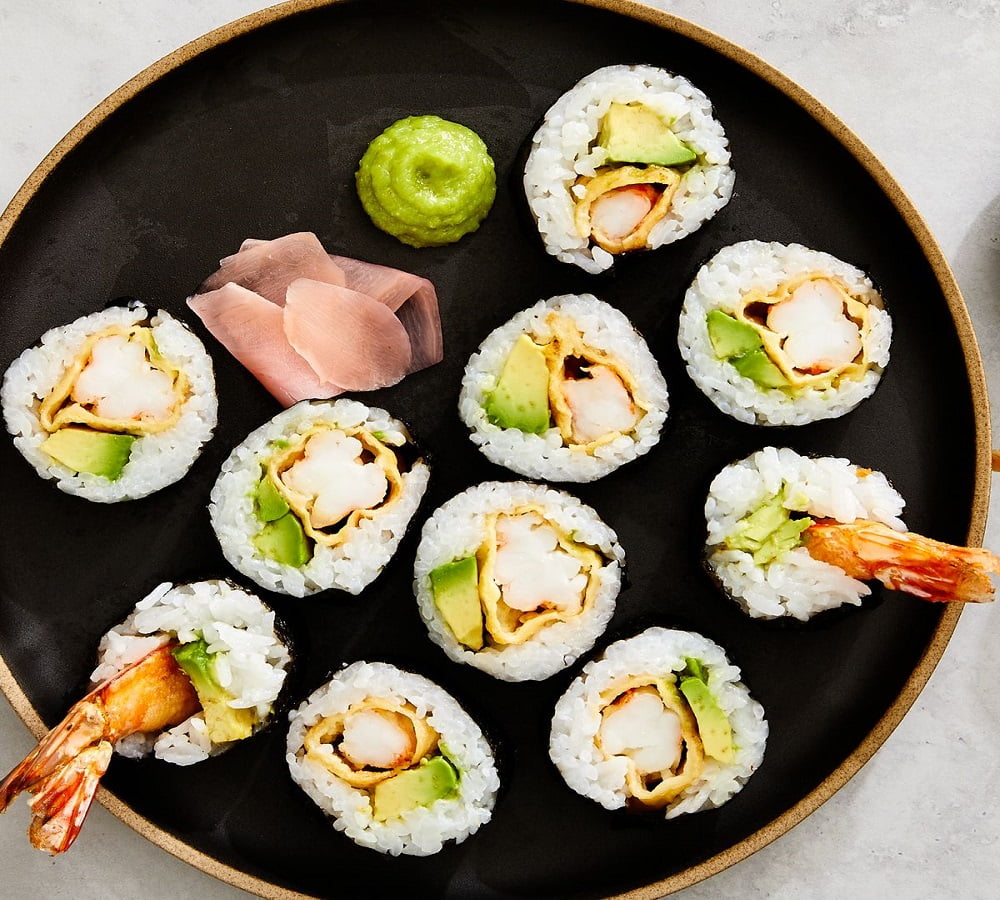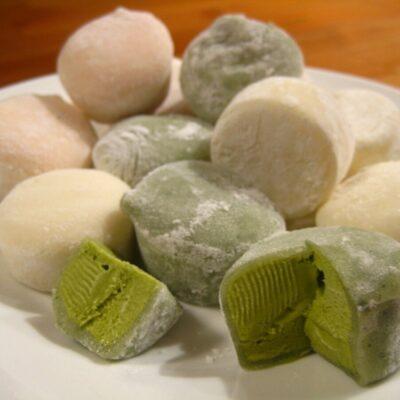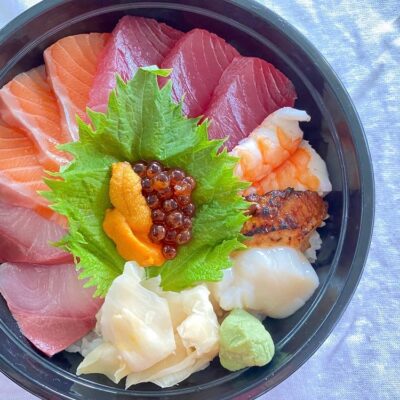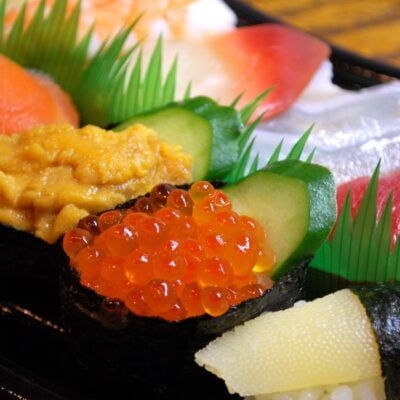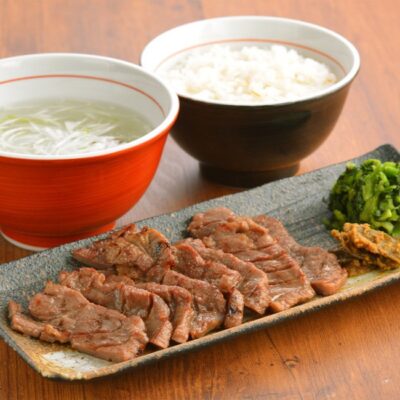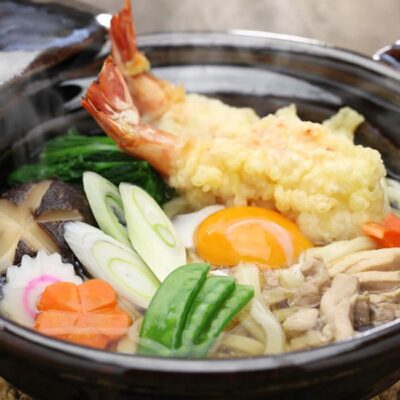Directions

Introduction
Are you a sushi lover who’s looking to save some money? Do you want to unleash your creativity and personalize your sushi rolls? Look no further! Homemade sushi is the answer you’ve been searching for. Making sushi at home allows you to have full control over the ingredients, flavors, and presentation of your rolls. While it may not reach the same level of perfection as professional sushi chefs, homemade sushi is still a satisfying and cost-effective option. In this article, we’ll guide you through the process of making homemade sushi, from the basic techniques to some delicious roll variations. Get ready to embark on a culinary journey that will delight your taste buds and impress your friends!
Benefits of Making Sushi at Home
- Cost Savings
Dining at a sushi restaurant can be quite expensive, especially if you’re a sushi enthusiast who loves to indulge in a variety of rolls. By making sushi at home, you can significantly reduce your expenses. The cost of the ingredients needed to make sushi is generally much lower than what you would pay for a sushi feast at a restaurant. Plus, with the right tools and techniques, you can produce a similar taste and quality to that of a professional establishment.
- Personalization
When you make your own sushi, you have complete freedom to customize your rolls with your favorite ingredients. Love spicy food? Add some chili flakes or sriracha sauce to your rolls. Prefer vegetarian options? Load up on a variety of fresh veggies. The possibilities are endless, and you can let your imagination run wild. Homemade sushi allows you to cater to your personal tastes and dietary preferences, making it a truly personalized culinary experience.
- Bonding Activity
Making sushi at home can also be a fun and interactive activity to do with your family, friends, or significant other. Get everyone involved in the process, from rolling the sushi to choosing the fillings and garnishes. It’s a great way to bond, have fun, and create lasting memories together. You can even turn it into a sushi-making party, where each person brings their favorite ingredients to contribute to the sushi feast.
Types of Sushi Rolls You Can Make at Home
- Shrimp Tempura Rolls
Shrimp tempura rolls are a popular choice for sushi enthusiasts. The combination of crispy tempura-battered shrimp, creamy avocado, and cool cucumber creates a delightful taste and texture contrast. Add a drizzle of spicy mayo or eel sauce for an extra kick of flavor. These rolls are perfect for those who enjoy a bit of crunch in their sushi.
- California Rolls
No sushi article would be complete without mentioning California rolls. This American creation has become a staple in sushi restaurants worldwide. The classic California roll consists of imitation crab meat, avocado, and cucumber wrapped in a nori sheet and sushi rice. For an authentic twist, you can use real crab meat instead of the imitation kind. The mild and creamy flavors of this roll make it a favorite among sushi lovers.
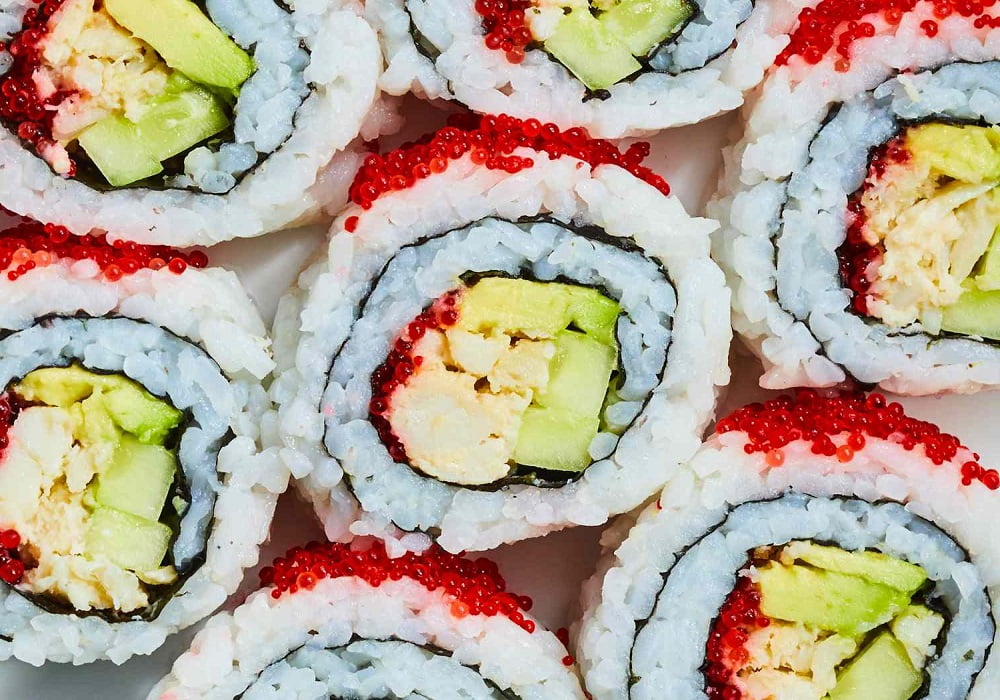
- Veggie Rolls
For all the vegetarians and vegans out there, veggie rolls are a fantastic option. Fill your rolls with a colorful array of vegetables such as carrots, bell peppers, cucumbers, avocado, and sprouts. You can even experiment with marinated tofu or tempeh for added protein. Veggie rolls are refreshing, healthy, and bursting with natural flavors.
- Philadelphia Rolls
If you’re a fan of smoked salmon and cream cheese, Philadelphia rolls are a must-try. These rolls combine the richness of cream cheese, the saltiness of smoked salmon, and the crunch of cucumber. They are perfect for those who enjoy a more indulgent sushi experience. To elevate the flavor profile, you can also add a slice of ripe avocado to the mix.
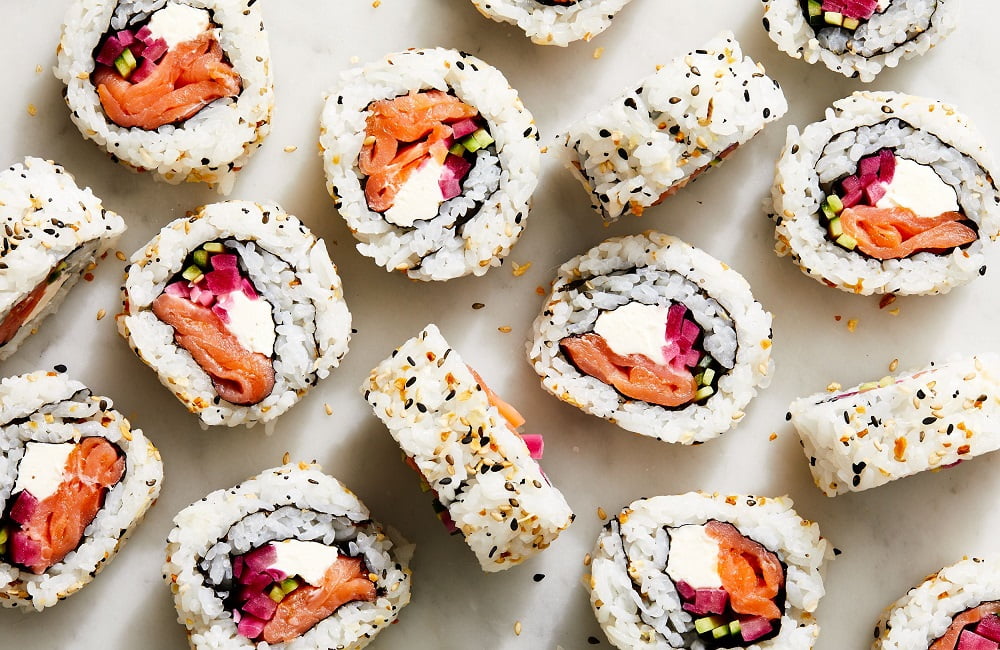
- Kimbap
Kimbap, also known as Korean sushi, is a roll that doesn’t use raw fish. It’s a fantastic option for those who are hesitant to try raw seafood or prefer cooked ingredients. Kimbap typically includes cooked proteins like marinated beef, ham, or even Spam, along with an assortment of vegetables such as carrots, spinach, and pickled radish. The rolls are tightly wrapped in seaweed and served in bite-sized pieces.

- Sushi Stacks
For a unique and visually stunning take on sushi, try making sushi stacks. Instead of rolling the sushi, you layer the ingredients in a mold or ring. Start with a base of sushi rice, then add your desired fillings such as raw fish, avocado, cucumber, and sesame seeds. Press everything down firmly and carefully remove the mold. The result is a beautiful and Instagram-worthy sushi tower.

- Chirashi Bowls
If you prefer your sushi in a bowl rather than rolled, chirashi bowls are the way to go. Chirashi means “scattered” in Japanese, and these bowls are essentially a colorful assortment of sushi toppings arranged over a bed of sushi rice. You can get creative with your toppings, using ingredients like sashimi-grade fish, tamago (Japanese omelet), pickled ginger, and sesame seeds. Chirashi bowls are visually appealing and full of flavorful surprises in every bite.
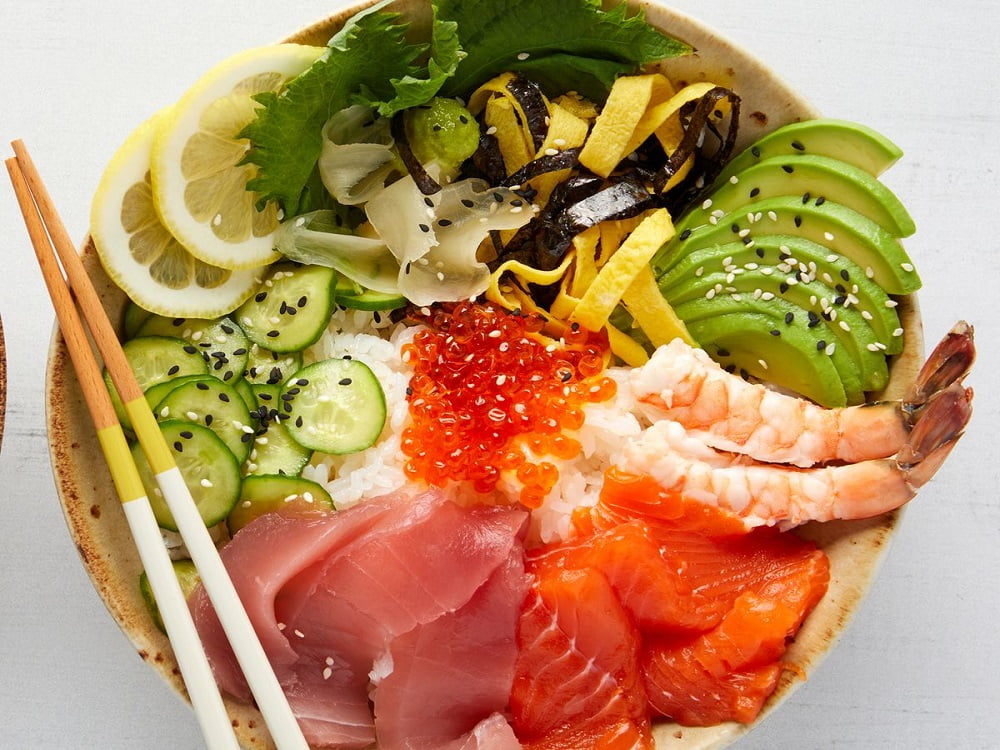
- Spicy Crab Roll
Do you enjoy a little heat in your sushi? Spice things up with a spicy crab roll. This roll typically combines spicy mayo, finely chopped fresh crab, cucumber, and avocado. The creamy and spicy flavors are an explosive combination that will tantalize your taste buds. Add a sprinkle of sesame seeds or drizzle some sriracha on top for an extra kick.
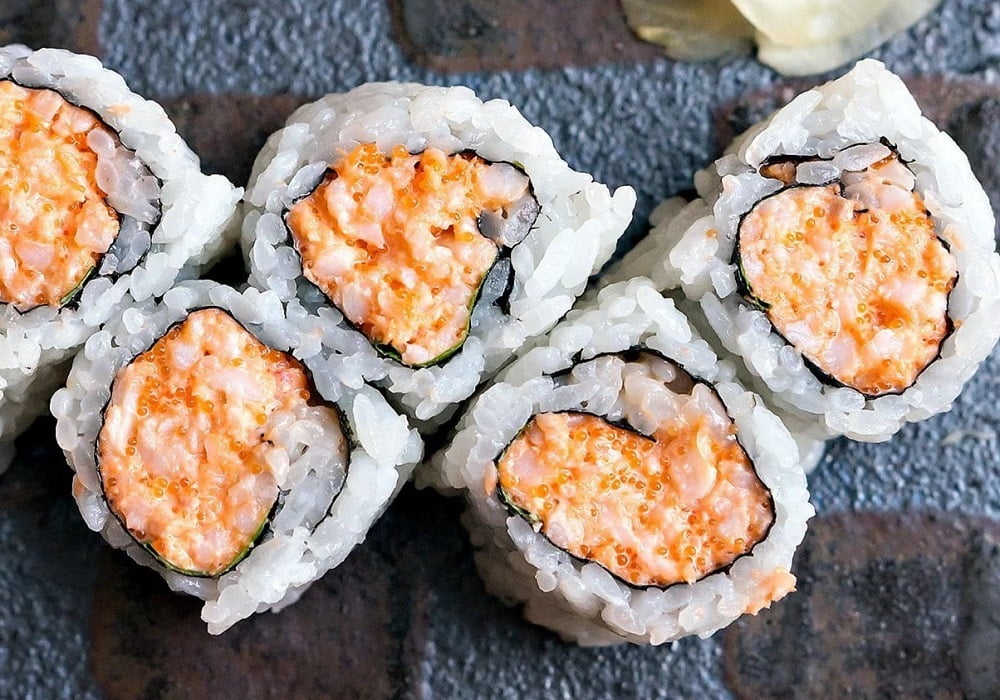
- Boston Roll
The Boston roll is a classic combination of poached shrimp, avocado, and mayonnaise. It’s a simple yet delicious roll that showcases the natural sweetness of the shrimp. You can enhance the flavor by adding a squeeze of fresh lemon juice or a sprinkle of salt. The Boston roll is light, refreshing, and perfect for seafood lovers.
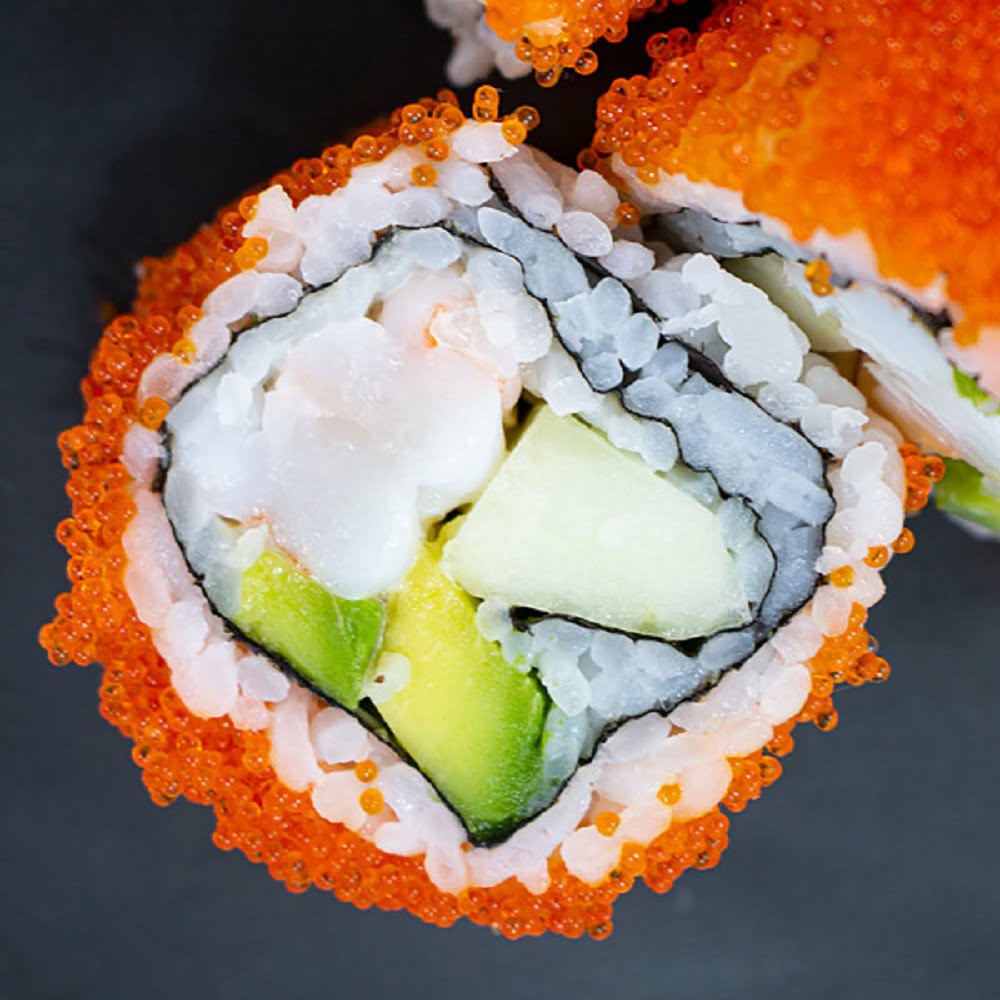
- Dragon Roll
For a visually stunning sushi roll, try making a dragon roll. This roll is made using ingredients such as eel, cucumber, and avocado. The outside of the roll is covered with thinly sliced avocado to resemble dragon scales. The dragon roll is a favorite among sushi enthusiasts due to its unique presentation and combination of flavors.
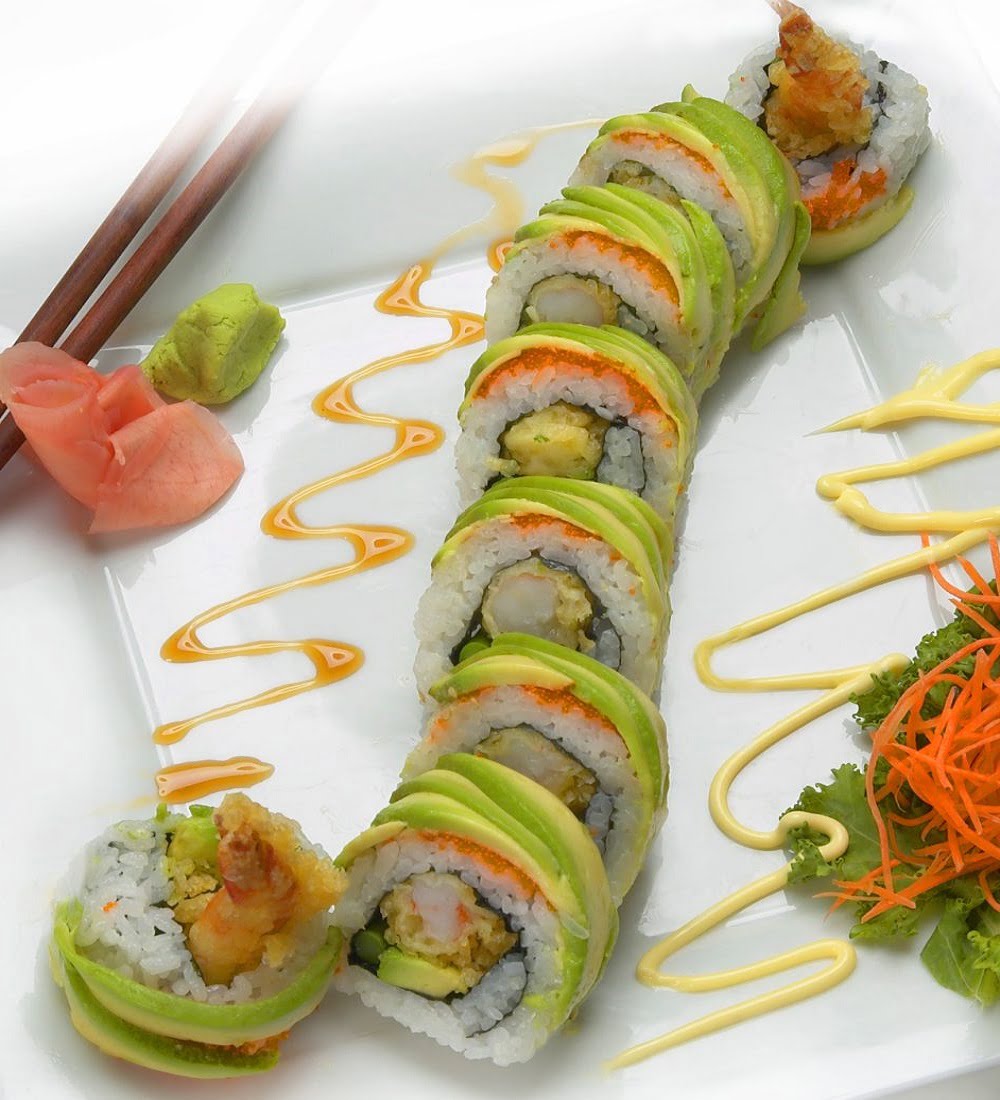
- Rainbow Roll
If you’re looking for a colorful and vibrant sushi roll, the rainbow roll is the perfect choice. The roll typically consists of a California roll topped with an assortment of fresh sashimi such as tuna, salmon, yellowtail, and avocado. The different colors and textures create a visually appealing roll that is as pleasing to the eyes as it is to the palate.
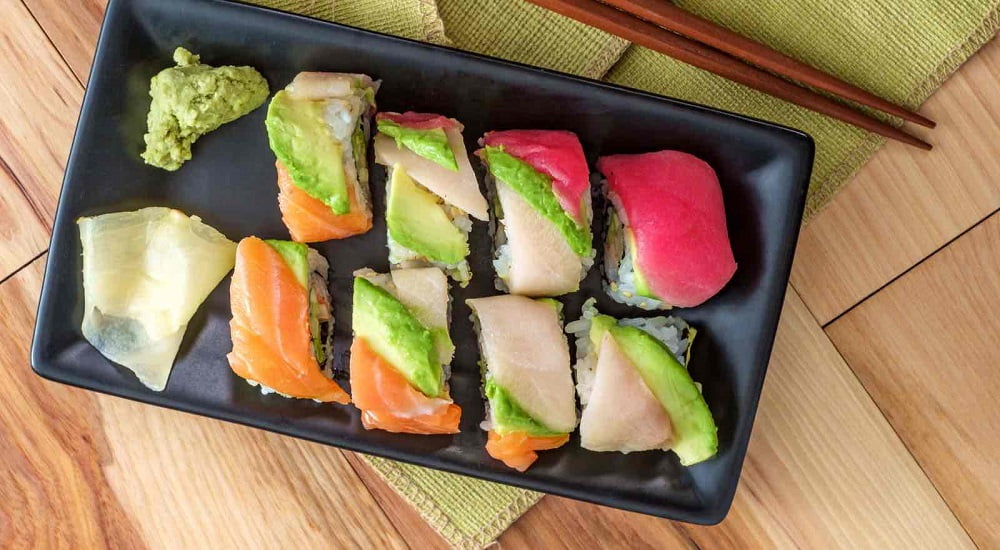
- Cucumber Sushi
For a light and refreshing sushi option, you can skip the rice altogether and make cucumber sushi. Slice a cucumber lengthwise into thin strips and use them as a substitute for the nori seaweed. Fill the cucumber strips with your favorite sushi fillings, such as crab, avocado, and cucumber. Roll them up tightly, and you’ll have a low-carb and refreshing sushi alternative.

Homemade Sushi Recipe:
Steps
1 Done | 1. Prepare the sushi rice by rinsing the rice thoroughly and cooking it according to the package instructions. Once cooked, let it cool slightly before seasoning with vinegar, sugar, and salt. Mix well and set aside. |
2 Done | 2. Lay a bamboo sushi mat or a dish towel on a flat surface and place a sheet of nori seaweed on top. |
3 Done | 3. Wet your hands with water and scoop a handful of sushi rice onto the nori sheet. Spread the rice evenly, leaving a small border around the edges. |
4 Done | 4. Arrange your desired fillings, such as raw fish, crab meat, cucumber strips, or avocado, in a line across the rice. |
5 Done | 5. Using the bamboo mat or dish towel, roll the sushi tightly from bottom to top, applying gentle pressure to ensure a firm roll. |
6 Done | 6. Wet a sharp knife with water and slice the sushi roll into bite-sized pieces. Wipe the knife clean between each cut to prevent sticking. |
7 Done | 7. Repeat the process with the remaining nori sheets and fillings. |
8 Done | 8. Serve the sushi rolls with soy sauce, wasabi, and pickled ginger on the side. |
9 Done | Frequently Asked Questions (FAQs)Q: Can I use regular rice for sushi? |
10 Done | ConclusionHomemade sushi offers an array of benefits, from cost savings to the freedom to personalize your rolls. You can experiment with different fillings, sauces, and presentations to create sushi rolls that cater to your tastes and preferences. Whether you're a seafood lover or a vegetarian, there's a sushi roll out there that suits you. So why not give it a try? With practice and a bit of creativity, you'll be rolling out delicious homemade sushi in no time. So grab your ingredients, gather your loved ones, and embark on a sushi-making adventure that will be both satisfying and fun! |



